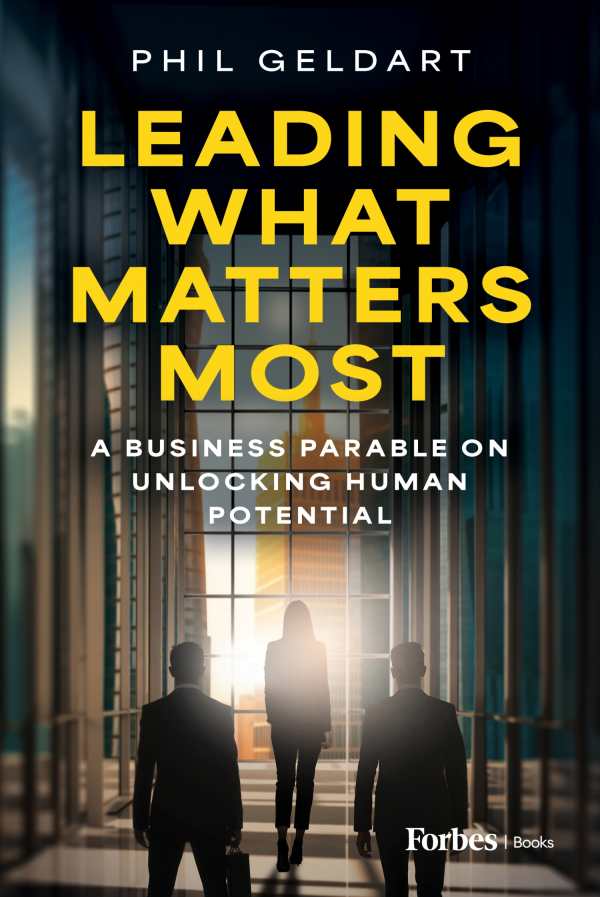Leading What Matters Most
A Business Parable on Unlocking Human Potential
Leading What Matters Most illuminates a path to corporate success with its story of a chief executive officer and a consultant developing strategies for employee engagement.
Phil Geldart’s parabolic business book Leading What Matters Most models harnessing human potential in the workplace.
Bridget is the story’s hypothetical chief executive officer of a multibillion-dollar technology company. In her role, she tackles issues including weak leadership, the loss of top talent, and a lack of staff development and advancement. Then she receives a concerning report about staff engagement and productivity. To help balance out her technical perspective (and to placate her concerned board), she brings in a consultant, Ray, who instructs her on taking a more people-centric approach to leadership. Together, they work to transform the company culture and maximize staff performance, with the story charting their progress, setbacks, and benchmarks. And the story is also broadened to deliver general lessons about what leaders should do to replicate Bridget and Ray’s successes.
The book’s characters are somewhat dimensionless; because the text’s approach is more didactic than narrative, they exist to convey general guidance. Their exchanges are somewhat stilted; they reflect the Socratic method and are filled with instructions throughout. At the end of each chapter, bullet-point lists recapitulate their takeaways as an act of mnemonic reinforcement. However, the book’s shifts between narrative and instruction are sometimes jarring—in particular because the characters’ exchanges have the flavor of guidebooks. Some of the book’s more colorful flourishes, as when a character is seen “guiding his fork through the fluffy meringue and into the dense lemon filling, finally scooping it all up in the cradle of the light, flaky crust,” are out of place as a result.
While Bridget and Ray illustrate leadership overhauls well, some of their scenes defy credulity in their rush to impart directions. This is true when an ultimatum is issued to the company’s managers: if they do not want to follow the consultant’s action plan to the letter, they can leave. The team’s resultant hostility is too blunt to be persuasive, as are similar dramatizations of the pitfalls of new strategic directions. And the duo’s pupil-student dynamic is sometimes unconvincing given the scale of Bridget’s organization and the sophistication that her role demands; the degree of enthusiasm she exhibits over a transformation notebook is unbelievable. Still, the central conceit does engage attention, and Bridget and Ray are effective vehicles for showing others how to effect changes in their company cultures.
Using an edifying parable to introduce leadership lessons, Leading What Matters Most is a nontraditional text about putting people first, developing one’s staff, and getting the most productivity out of a team.
Reviewed by
Joseph S. Pete
Disclosure: This article is not an endorsement, but a review. The publisher of this book provided free copies of the book and paid a small fee to have their book reviewed by a professional reviewer. Foreword Reviews and Clarion Reviews make no guarantee that the publisher will receive a positive review. Foreword Magazine, Inc. is disclosing this in accordance with the Federal Trade Commission’s 16 CFR, Part 255.

